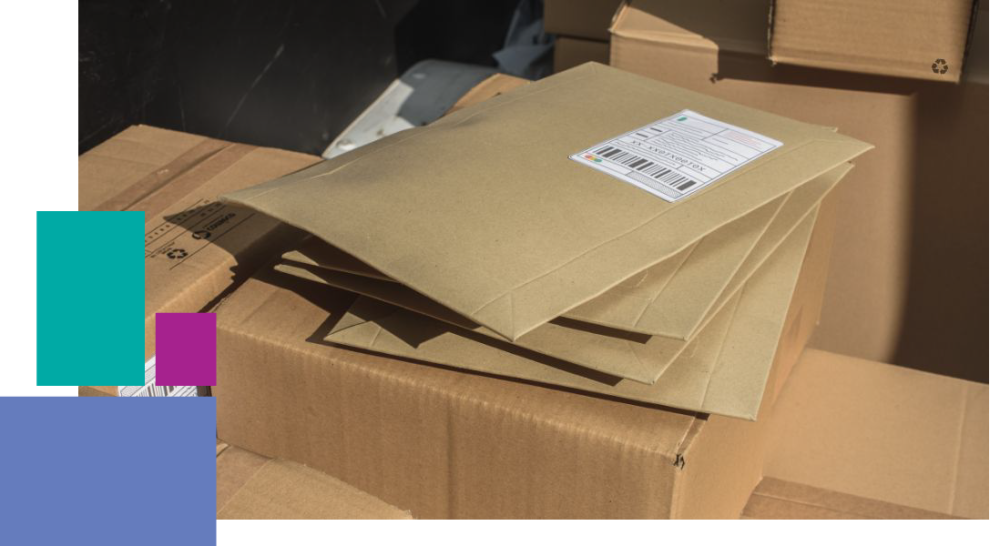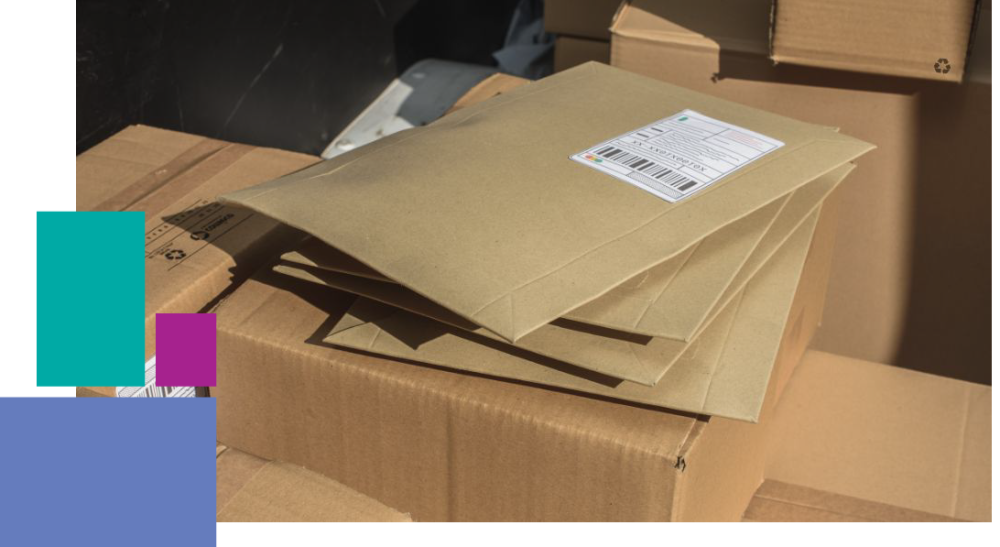Welcome to Macfarlane Packaging, your go-to resource for all things related to package shipping. In this comprehensive guide, we'll walk you through the process of shipping a package from start to finish. Whether you're a small business owner, an e-commerce seller, or simply someone sending a gift to a loved one, we've got you covered.
In this guide, we'll look into the basics of package shipping, including understanding the key elements involved. We'll also delve into the details of creating a shipping label, highlighting everything you need to know to ensure accurate and efficient parcel delivery. Lastly, we'll help you choose the best shipping option for your parcel, taking into account factors such as its destination, size and weight.
1. Assess your product & its packaging needs
Make sure you assess your product and factors that could influence how you ship
a package. Think about:
Size and weight of your products.
Any irregularly shaped products.
Type of contents – e.g. is it fragile or breakable?
Shipping conditions and destination – are there any special
requirements? An example is cold chain shipping for food or
medicines.
Regulations – do any apply to your product? Hazardous goods
or liquids might require specialist packaging or labelling.


2. Choose appropriate packaging
The packaging materials you use play a crucial role in protecting your items during transit. The outer packaging should be sturdy to withstand handling, while the inner packaging must provide adequate cushioning to prevent damage. Consider:
If the packaging will meet the needs of your products and them sufficiently.
If your packaging is the right size and will hold the weight of your product. For example, do you need to comply with Royal Mail PIP or An Post size guidelines?
If you’re using too much or too little packaging.
If your packaging can be recycled.
If your packaging adheres to any courier guidelines.
For example, a fragile but heavy vase may need to be packed in a double wall cardboard box lined with paper cushioning.
In contrast, a lightweight piece of clothing can easily be packed in a mailing bag.


3. Pack your products
Take your chosen outer packaging, e.g. a cardboard box, and line it with any inner packaging if using.
Insert your product into your outer packaging, cover it with additional inner packaging if using and then seal your packaging to secure it. If you’re using boxes, you’ll probably need packing tape to do this. However, some boxes and all mailing bags or bubble envelopes come with self-seal strips for easy closure.


4. Print labels and ship
Shipping labels include vital information, such as the sender’s and receiver’s addresses, tracking numbers, and any specific instructions for handling. Print your labels and stick them to your parcel. They’ll ensure your package is treated properly during transit. Your chosen courier may want you to use a label specific to their service.
Once this is complete, you’re ready to ship your package.


Understanding the Basics of Package Shipping
When it comes to shipping a package, there are several key factors to consider to ensure its safe and timely delivery. One of the most important aspects is choosing the right packaging materials. The packaging materials you use play a crucial role in protecting your items during transit.
At Macfarlane Packaging, we understand the importance of selecting high-quality packing materials that meet your specific needs. Whether you're shipping fragile items, perishable goods, or bulky products, we have a wide range of packaging options to suit every requirement.
Speaking of packaging options, let's take a quick overview of the different types available. From corrugated cardboard boxes to padded envelopes and mailing bags, each option has its own advantages and suitability for specific items. Our packaging experts can guide you in selecting packaging solutions that are most appropriate for your shipment.
Properly sealing your package is another crucial step in ensuring its integrity during transit. A securely sealed package not only prevents damage but also protects its contents from theft. We recommend using high-quality packaging tape or adhesive to seal your packages. Make sure to seal all openings, including the flaps and edges of the box, to provide maximum security.
Remember, when it comes to shipping a package, choosing the right packaging materials, understanding the different packaging options, and properly sealing your package are essential for a successful shipment. At Macfarlane Packaging, we are committed to providing you with the highest quality packing materials and expert advice to help you ship your packages with confidence.
Some popular packing items you may need to send a parcel include:
Cardboard Boxes
0201 box - this is the most common cardboard box style. Outer flaps meet at the top and bottom and require sealing. It will not require any tooling unless it needs modification for specialist erecting machines.
Examples include product code: 346107 (single wall) and 345003 (double wall).
0427 box - this is a folder- type cardboard box,
sometimes called a pizza style box. It usually consists of only one piece of board. The bottom of the box is hinged to form two or all side walls and the cover.
They are available as postal and shipping boxes that conform to royal mail PIP guidelines.
Examples include product code: 256398 and 271158.
Packing tapes
Polypropylene tape - a good economical self-adhesive packing tape. It uses a range of adhesives, including acrylic, hot melt and solvent, is moisture-resistant and highly durable. The material is also suitable for use in cold chain conditions.
Examples include product code: 344271 and 000153.
Paper tape - eco-friendly and recyclable with tamper evident properties, paper tape can help reduce material waste and offer process efficiencies, which saves money. It is available as self-adhesive tape or water activated gummed paper tape.
Examples include product code: 301998 and 005462.
Voidfill
Bubble wrap - this cost-effective packaging solution offers excellent transit protection for fragile items. It comes in a wide range of sizes and is available as a standard or anti-static option.
Examples include product code: 2479EL and 000394.
Ranpak® FillPak® paper - this simple, sustainable packaging solution stops products from moving inside your box in transit, minimising the risk of damage. It is made from renewable sources and widely recyclable at kerbside.
Examples include product code: 003801 and 288732 (greenline).
Tape dispensers
BP555 electronic gummed paper tape dispenser - this automatic, table-top tape dispenser moistens, cuts and delivers pre-programmed lengths of gummed paper tape, offering control over material use. Perfect for high demand environments.
Product code: 203867
Hand-held tape dispenser - for use with self-adhesive polypropylene, PVC and paper tapes. This handheld tape gun makes parcel sealing simple. It features a ribbed handle for easy gripping and a safety blade for effortlessly cutting your tape. Available in two options – 48mm and 75mm.
Product code: 000118 (48mm) and 001374 (75mm).
Accessories
Shipping labels - a wide range of labels is available, inlcuidng this way up and fragile warning labels as well as plain self-adhesive labels.
Examples include product code: 002892 and 003092.
Document wallets - an excellent solution to send paperwork such as invoices, delivery notes and shipping receipts, protecting it from water, dirt, dust and damage. Plastic and paper options are available as well as a variety of sizes.
Examples include product code: 000298 and 000572.
Creating a Shipping Label: What You Need to Know
When it comes to shipping a package, creating a shipping label is an essential step. Not only does it ensure that your package reaches its destination, but it also plays a crucial role in tracking parcels. In this section, we will provide you with a step-by-step guide to creating a shipping label, explain the importance of shipping labels, and discuss their role in parcel tracking.
1. Step-by-Step Guide to Creating a Shipping Label
Creating a shipping label is easier than you might think. Start by gathering all the necessary information, including the recipient's address, your return address, and any other details required by the carrier. Then, use a reliable shipping label generator or software to input the information and generate the label. Make sure to double-check all the details before printing the label.
2. Understanding Shipping Labels and Their Importance
Shipping labels serve as an identification tool for your package. They contain crucial information such as the sender's and recipient's adressess, tracking numbers, and any special handling instructions. These labels ensure that your package is handled correctly throughout its journey, and they also provide a professional and organised appearance.
3. The Role of Shipping Labels in Tracking Parcels
Shipping labels play a vital role in parcel tracking. The unique tracking number on the label allows you and the carrier to monitor the package's progress from pickup to parcel delivery. By scanning the barcode or entering the tracking number, you can easily track your package online and stay updated on its whereabouts.
Choosing the Best Shipping Option for Your Parcel
When it comes to shipping a package, it's important to choose the best shipping option that suits your needs. Whether you are sending your parcel domestically or internationally, there are several factors to consider to ensure a smooth and cost-effective delivery.
Firstly, let's compare domestic and international shipping options. Domestic shipping refers to packages that are being sent within the same country, whilst international shipping involves sending parcels to different countries. Domestic shipping is usually faster and less expensive compared to international shipping, which involves additional customs procedures and longer transit times.
Next, it's essential to understand the impact of parcel delivery speed on shipping costs. Generally, the faster you want your package to be delivered, the higher the shipping costs will be. If time is not a critical factor, opting for a slower delivery method can help you save money. It's important to balance the urgency of your shipment with your budget.
Lastly, finding the most cost-effective shipping method is crucial. Consider factors such as package size and weight, destination and delivery speed. Research different shipping providers and compare their rates and services. Macfarlane Packaging offers a range of shipping solutions tailored to your needs, ensuring your parcel is delivered safely and on time.
Bestsellers
Why not download our free, printable guide?
If you want an at-hand reference for packing and hipping a parcel, we've created a handy download that you can print and keep on your packing bench.


